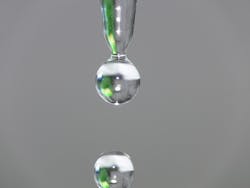MIT Engineers Design New Method for Removing Lead from Water
Engineers at MIT have developed a new approach to removing lead or other heavy-metal contaminants from water.
According to MIT, the new process is more energy-efficient than any other used system, and this development may be used to treat lead-contaminated water supplies at the home level as well as with chemical or industrial processes.
The system is the most recent in a series of applications based on initial findings six years ago by members of the MIT research team.
According to the engineers, the method was originally developed for desalination of seawater or brackish water and then later adapted for removing radioactive compounds from the cooling water of nuclear power plants.
The findings are published in the journal Environmental Science and Technology – Water, in a paper by MIT graduate students Huanhuan Tian, Mohammad Alkhadra, and Kameron Conforti, and professor of chemical engineering Martin Bazant, according to MIT.
The approach uses shock electrodialysis, so an electric field is used to produce a shockwave inside an electrically charged porous material carrying the contaminated water. The shock wave then propagates from one side to the other as voltage increases and separates the feed stream into a brine and a fresh stream. According to the research, the result is a 95% reduction of lead from the outgoing fresh stream.
Some of the limitations include that the process has only been demonstrated at small laboratory scale and at slow flow rates, reported MIT. Due to this, the research must be scaled up and require further research.
The MIT team believes this system may be appropriate as an interim measure for places like Flint, Michigan.
The process could be adapted for some industrial uses including cleaning water produced in mining or drilling operations, so that the treated water can be safely disposed of or reused. The research received support from a MathWorks Engineering Fellowship and a fellowship awarded by MIT’s Abdul Latif Jameel Water and Food Systems Lab, funded by Xylem, Inc.
